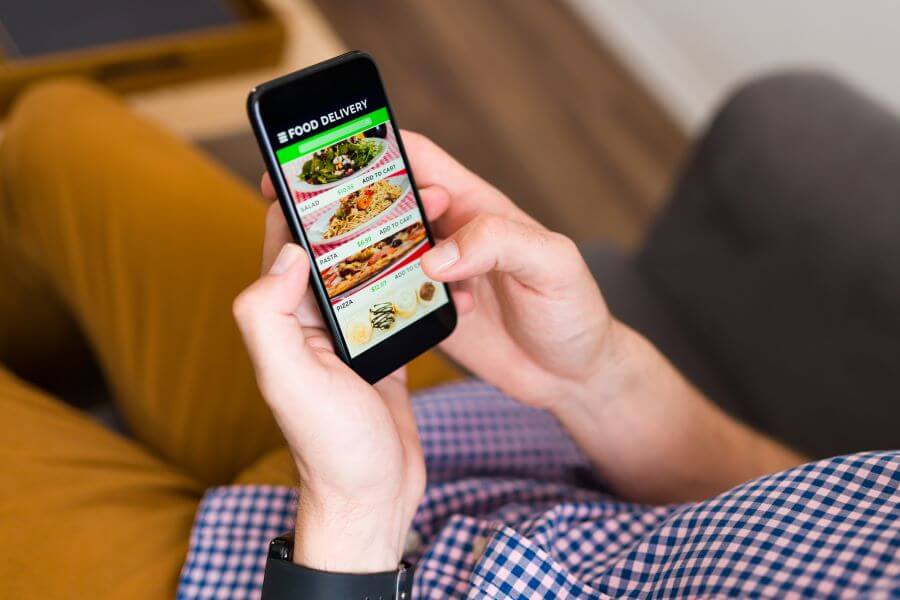Origins of McDelivery
The Conceptualization of Fast Food Delivery
Market Forces Driving the Need for Delivery
As lifestyles became busier and more consumers sought the convenience of food delivered straight to their doorstep, the fast food industry began to consider delivery services. In particular, the rise of digital technology and online shopping created a consumer expectation for on-demand services across all sectors, including food. For McDonald’s, a global leader in fast food, the move towards delivery was driven by both customer demand and the need to stay competitive in an evolving market landscape.
McDonald’s Strategic Decision to Enter Delivery Services
Recognizing the potential of delivery services to drive growth and customer engagement, McDonald’s made the strategic decision to launch its own delivery service, McDelivery. This decision marked a significant shift in the company’s business model, which had traditionally been based on in-store dining and takeaway. However, McDonald’s saw the potential of delivery to reach new customers, increase sales, and enhance its brand image as a modern and innovative company.
Early Experiments and Challenges
Pilot Programs and Testing McDelivery Concepts
Before launching McDelivery on a global scale, McDonald’s conducted several pilot programs to test the concept and identify potential challenges. These pilots were carried out in select markets and involved various delivery methods, from traditional courier services to innovative solutions like drone delivery. Through these pilots, McDonald’s gained valuable insights into the operational, logistical, and customer service aspects of delivery.

Overcoming Initial Operational Hurdles
Despite the promise of delivery, McDonald’s faced several challenges in implementing McDelivery. These included logistical issues, such as ensuring timely delivery and maintaining food quality during transport, as well as operational challenges, such as integrating delivery into existing restaurant operations and training staff. To overcome these hurdles, McDonald’s invested in new systems and processes, trained its staff, and worked closely with delivery partners.
Technological Innovations in Delivery
Digitalization of Ordering Systems
The Role of Mobile Apps in Facilitating Orders
A key factor in the success of McDelivery has been the digitalization of ordering systems. McDonald’s developed a mobile app that allows customers to place orders from their smartphones, choose delivery or pick-up, and make payments securely. The app also features a user-friendly interface and personalized recommendations, enhancing the customer experience and making ordering easier and more convenient.
Integrating McDelivery into Online Platforms
In addition to its native app, McDonald’s has integrated McDelivery into various online platforms to reach a wider audience. This includes partnerships with popular food delivery apps as well as integration with social media platforms, where users can order food without leaving the app. These integrations have helped McDonald’s tap into new customer segments and keep pace with evolving consumer behaviors.
GPS Tracking and Real-Time Updates
Enhancing Customer Experience with Tracking Features
To enhance the delivery experience, McDonald’s introduced GPS tracking and real-time updates as part of McDelivery. Once an order is placed, customers can track the progress of their delivery on the app, from preparation to dispatch to arrival. This feature not only provides transparency, but also gives customers peace of mind and helps manage expectations.
Ensuring Accuracy and Timeliness in Deliveries
Real-time tracking also has operational benefits for McDonald’s. It enables the company to monitor delivery performance, identify issues, and make improvements. For example, if a delivery is taking longer than expected, McDonald’s can investigate the cause, whether it’s a delay in the kitchen or a problem on the road, and take corrective action. This helps ensure the accuracy and timeliness of deliveries, which are critical factors in customer satisfaction.
Global Expansion of McDelivery
McDelivery Around the World
McDonald’s Approach to Global Market Penetration
After the successful pilot of McDelivery, McDonald’s began to expand the service globally. The company took a phased approach to this expansion, starting with markets where delivery was already popular and then gradually entering new markets. Each launch was accompanied by a localized marketing campaign to raise awareness and drive adoption.
Adapting McDelivery to Diverse Cultural and Economic Landscapes
As it expanded McDelivery globally, McDonald’s had to adapt the service to diverse cultural and economic landscapes. This included adjusting the menu to cater to local tastes, pricing the service appropriately for different income levels, and navigating regulatory requirements in each country. Despite these challenges, McDonald’s was able to successfully establish McDelivery in markets around the world, thanks to its deep understanding of local cultures and strong operational capabilities.
Challenges in International Logistics
Navigating Local Regulations and Infrastructure
Implementing a global delivery service is no small feat, and McDonald’s faced several logistical challenges along the way. These ranged from navigating local regulations on food delivery, to dealing with infrastructure constraints in certain markets. To overcome these challenges, McDonald’s worked closely with local teams, leveraged its global supply chain expertise, and partnered with local delivery services.
Partnerships with Local Delivery Services
To facilitate its international expansion, McDonald’s formed partnerships with local delivery services. These partners provided the necessary local knowledge and delivery infrastructure, while McDonald’s brought its global brand and operational excellence. These partnerships have been instrumental in enabling McDonald’s to quickly and efficiently roll out McDelivery in new markets.
Menu Adaptations for Delivery
The Challenge of Maintaining Food Quality
Innovations in Packaging to Retain Freshness
One of the key challenges in food delivery is maintaining food quality during transport. To address this, McDonald’s invested in innovative packaging solutions that keep food hot and fresh until it reaches the customer. This includes insulated bags, sealed containers, and specially designed packaging for different types of food. These innovations have helped ensure that McDelivery orders arrive in the best possible condition.
Strategic Menu Selection for Delivery
In addition to improving packaging, McDonald’s also made strategic menu selections for delivery. The company recognized that not all menu items are suitable for delivery, particularly those that are prone to spillage or don’t hold up well over time. As such, McDonald’s carefully selected items for its delivery menu that could withstand the rigors of transport and still deliver on taste and quality.
Introduction of Exclusive McDelivery Items
Tailoring Offerings to Delivery Preferences
To further enhance the McDelivery experience, McDonald’s introduced exclusive items that are only available for delivery. These items are designed with delivery in mind, meaning they are easy to transport, stay fresh longer, and cater to the preferences of delivery customers. Examples include family-sized meals, bundled deals, and limited-time offers.
Creating a Unique McDelivery Experience
The introduction of exclusive McDelivery items is part of McDonald’s strategy to create a unique delivery experience. By offering items that customers can’t get in-store, McDonald’s differentiates McDelivery from its regular service and adds an element of exclusivity and excitement. This has been well-received by customers and has helped drive growth in delivery sales.
Economic Impact on McDonald’s
McDelivery’s Contribution to Revenue
Analyzing the Financial Impact of Delivery Services
Since its launch, McDelivery has made a significant contribution to McDonald’s revenue. Sales from delivery have grown steadily, driven by increasing customer demand, expansion into new markets, and continuous improvements in service. In some markets, delivery now accounts for a substantial portion of total sales, reflecting the success of McDonald’s delivery strategy.

McDelivery as a Market Differentiator
Beyond direct revenue, McDelivery has also provided strategic benefits for McDonald’s. It has helped differentiate the brand in a competitive market, attract new customers, and increase customer loyalty. By offering a convenient and reliable delivery service, McDonald’s has been able to stay relevant in the digital age and meet the evolving needs of its customers.
Economic Implications for Franchisees
Balancing Increased Sales with Operational Costs
While McDelivery has driven sales growth for McDonald’s, it has also brought additional costs for franchisees. These include costs for delivery equipment, additional staff, and commission fees for delivery partners. To balance these costs, McDonald’s works closely with franchisees to optimize operations, manage costs, and ensure that the benefits of delivery outweigh the costs.
Franchisee Perspectives on McDelivery
Despite the additional costs, many franchisees have embraced McDelivery as a growth opportunity. They see the value in meeting customer demand for delivery and appreciate the support from McDonald’s in implementing the service. While there are challenges, the overall sentiment among franchisees towards McDelivery is positive, reflecting the success of the service.
Marketing and Branding Strategies
McDelivery Campaigns and Promotions
Collaborations and Limited-Time Offers
To promote McDelivery, McDonald’s has launched various marketing campaigns and promotions. These include collaborations with celebrities and influencers, limited-time offers, and special events. These campaigns not only drive awareness and usage of McDelivery, but also create buzz and excitement around the brand.
Social Media Strategies for McDelivery Promotion
Social media plays a key role in McDonald’s McDelivery marketing strategy. The company uses platforms like Instagram, Twitter, and Facebook to engage with customers, share promotions, and highlight the convenience of McDelivery. By leveraging the power of social media, McDonald’s is able to reach a large audience and drive engagement with McDelivery.
McDelivery Loyalty Programs
Encouraging Repeat Business Through Loyalty
To encourage repeat business, McDonald’s has integrated McDelivery into its loyalty program. Customers can earn points for every delivery order, which they can then redeem for free items or discounts. This not only incentivizes customers to use McDelivery, but also builds loyalty and encourages repeat business.
Analyzing the Effectiveness of Loyalty Initiatives
McDonald’s continuously analyzes the effectiveness of its loyalty initiatives to ensure they are driving desired outcomes. This includes tracking key metrics like repeat orders, average order value, and customer satisfaction. Based on these insights, McDonald’s adjusts its loyalty program to better meet the needs of its customers and maximize the value of McDelivery.
Challenges and Controversies
Health and Convenience Concerns
Addressing Criticism Around Fast Food Delivery
As with any fast food service, McDelivery has faced criticism related to health concerns. Critics argue that the convenience of delivery makes it easier for people to consume fast food, which can lead to unhealthy eating habits. To address these concerns, McDonald’s has made efforts to offer healthier options on its menu, provide nutritional information, and promote balanced eating. The company is committed to helping customers make informed choices about their food, whether they are dining in-store or ordering delivery.
Balancing Speed and Quality in Delivery
Another challenge for McDelivery is balancing speed and quality. Customers expect their food to be delivered quickly, but not at the expense of quality. To achieve this balance, McDonald’s has implemented strict quality controls, invested in training for delivery staff, and used technology to optimize delivery routes and times. Despite these efforts, there can still be occasional issues with delivery, which McDonald’s addresses through its customer service channels.
Competition in the Delivery Space
Standing Out in a Crowded Market
The food delivery market is highly competitive, with many players vying for a share of the pie. To stand out, McDonald’s leverages its strong brand, extensive menu, and global reach. The company also differentiates McDelivery through exclusive offers, personalized recommendations, and a seamless ordering experience.
Ongoing Efforts to Maintain Market Position
Despite its success, McDonald’s does not take its position in the delivery market for granted. The company continuously seeks to improve McDelivery, whether by introducing new features, expanding into new markets, or partnering with other companies. These ongoing efforts help McDonald’s maintain its market position and stay ahead of the competition.
Technological Integration Beyond Ordering
Smart Home Devices and McDelivery
Integrating with Voice Assistants for Easy Ordering
As part of its digital strategy, McDonald’s has integrated McDelivery with smart home devices. Customers can now order McDelivery using voice assistants like Amazon Alexa and Google Assistant. This provides an additional level of convenience and makes ordering even easier.
The Role of AI in Enhancing the Delivery Experience
Artificial intelligence (AI) also plays a role in McDelivery. McDonald’s uses AI to personalize recommendations, optimize delivery routes, and predict order volumes. These applications of AI not only improve the customer experience, but also enhance operational efficiency and decision-making.

Future Trends in McDelivery
Technological Innovations and Sustainability Initiatives
Anticipating Future Developments in Delivery Tech
Looking ahead, McDonald’s is set to continue innovating in the delivery space. This could include further integration with smart devices, use of drones for delivery, or new payment options. As technology evolves, McDonald’s will likely adapt and incorporate these advancements into McDelivery.
Expanding Sustainability Efforts in Delivery
Sustainability is another area of focus for McDonald’s. The company is already making efforts to reduce the environmental impact of its operations, and this extends to McDelivery. This could involve more sustainable packaging, carbon-neutral delivery, or initiatives to reduce food waste. As consumer awareness of sustainability grows, these efforts will likely become increasingly important.
Conclusion: The Evolution of McDelivery
McDonald’s Pioneering Role in Fast Food Delivery
From its origins to its global expansion, McDelivery represents a significant evolution in fast food delivery. McDonald’s has not only pioneered this service, but has continually improved and refined it to meet the changing needs of customers. Along the way, the company has faced challenges and controversies, but has always strived to deliver the best possible experience for its customers.
The Future of McDelivery
As we look to the future, it’s clear that McDelivery will continue to play a key role in McDonald’s business. Whether through technological innovations, sustainability initiatives, or new marketing strategies, McDonald’s is set to continue pushing the boundaries of what’s possible in fast food delivery. And as it does so, customers can expect even more convenience, choice, and value from McDelivery.






